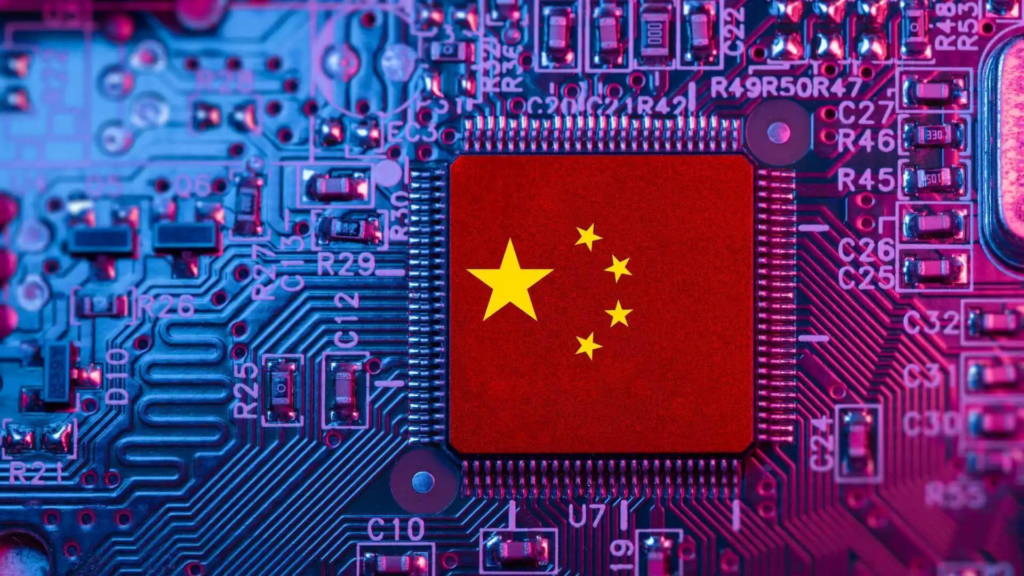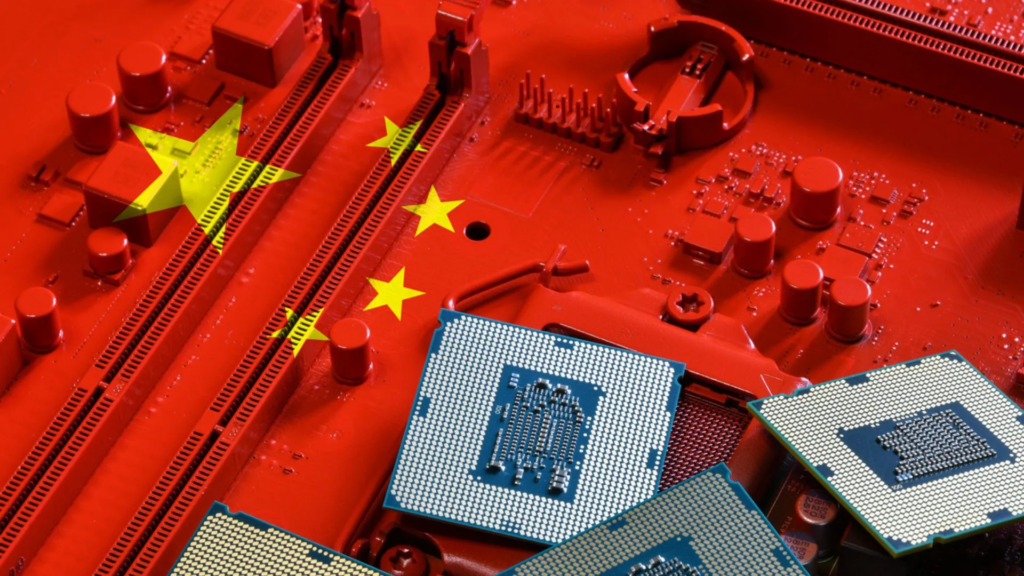Introduction
In a scientific milestone that could redefine the future of computing, a research team at Peking University’s Institute for Artificial Intelligence, led by Researcher Sun Zhong, has shattered a century-old technological limitation. The team has developed a high-precision and scalable analog matrix computing chip built on Resistive Random-Access Memory (RRAM) technology.
Published in the prestigious journal Nature Electronics, the breakthrough achieves analog computation accuracy comparable to digital systems, improving analog precision by five orders of magnitude — or nearly 100,000 times.
This achievement marks a monumental step in post-Moore era computing, where energy efficiency and processing power matter more than transistor counts.
5 Key Takeaways
- Historic Breakthrough: Peking University develops the world’s most precise analog computing chip.
- Unmatched Precision: Improves analog computation accuracy by five orders of magnitude.
- Massive Performance Leap: Outperforms GPUs by up to 1,000x in efficiency.
- Broad Applications: Poised to power AI, 6G, and edge devices
The 100-Year Challenge: Why Analog Computing Lagged Behind
Analog computing is not new. In fact, it predates digital computers. Early analog machines could model differential equations and simulate physics problems long before silicon processors existed.
Yet, analog computing faced a fatal flaw — inaccuracy. Noise, variability, and drift made analog systems unreliable for large-scale, precise computations. As digital computing advanced, analog methods faded into history.
But with the explosion of AI, 6G, and edge computing, the demand for faster and more energy-efficient processing has reignited interest in analog computing — and Peking University’s team may have just solved its biggest weakness.
techovedas.com/huawei-recognized-as-digital-for-life-champion-in-singapore
Inside the Breakthrough: The RRAM-Based Analog Matrix Chip
The Peking University researchers created a resistive random-access memory (RRAM) chip that performs matrix-based analog computation with unprecedented accuracy.

RRAM technology allows data to be stored and processed in the same physical location — a concept known as in-memory computing.
Unlike digital chips that move data back and forth between memory and processor cores (a process that consumes huge energy), RRAM executes computations directly within memory cells.
By fine-tuning the resistance states of RRAM and developing precision calibration algorithms, the team achieved digital-level accuracy — something previously thought impossible for analog systems.
“This is the first time analog computation accuracy has rivaled that of digital systems,” said Sun Zhong, lead researcher. “We improved traditional analog precision by nearly 100,000 times.”
techovedas.com/what-emerging-memories-types-and-advantages
Performance Beyond GPUs
The performance results are staggering.
When tested on large-scale MIMO (multiple-input multiple-output) signal detection — a key task in advanced communication systems — the analog RRAM chip demonstrated:
- Throughput hundreds to thousands of times higher than top-tier GPUs.
- Energy efficiency improvements of up to 1,000x.
In simple terms, the chip can process complex computations faster and with far less power, making it ideal for next-generation technologies that demand real-time processing.
A Leap Toward Post-Moore Era Computing
The semiconductor industry has long depended on Moore’s Law, which predicts transistor density doubling every two years. But as transistor sizes approach atomic limits, the digital performance gains that once fueled innovation are slowing.
This has pushed global researchers to explore new computing paradigms — quantum computing, neuromorphic systems, and now, high-precision analog computing.
Peking University’s analog chip could become a cornerstone of post-Moore computing, where progress is defined not by smaller transistors, but by smarter architectures and lower energy footprints.
/techovedas.com/what-is-moores-law-more-than-moore-and-beyond-moore
Real-World Applications
The implications of this research extend far beyond the lab.
1. 6G Communications
Next-generation 6G networks will require base stations to process massive antenna signals in real time.
This analog RRAM chip can handle such large-scale signal detection tasks with ultra-low power, boosting network efficiency and data throughput.
That means faster internet speeds, lower latency, and greener connectivity.
2. Artificial Intelligence Acceleration
AI training relies on heavy matrix multiplications. The analog chip can accelerate second-order optimization algorithms, drastically improving training efficiency for large models.
In essence, it could reduce the training time and energy cost of systems like GPT models or image recognition AI by massive margins.
3. Edge and On-Device AI
Perhaps the most transformative application lies in edge computing.
With its low-power design, this analog chip enables AI inference and training directly on devices — without relying heavily on the cloud.
That means smarter, more autonomous devices capable of learning and adapting locally — from smartphones and drones to medical wearables and autonomous cars.
techovedas.com/made-in-india-vaaman-reconfigurable-power-redefines-edge-computing
Why It Matters: A New Frontier for China’s Semiconductor Innovation
This breakthrough also underscores China’s growing strength in semiconductor R&D.
As the U.S. and its allies impose restrictions on advanced chip exports, Chinese researchers are pivoting toward alternative computing architectures instead of catching up in digital silicon alone.

Developing a chip that can outperform digital GPUs in specific workloads — using homegrown materials, design, and algorithms — marks a strategic leap toward technological independence.
It reflects a broader trend in China’s research landscape: moving from following global standards to setting them.
techovedas.com/top-semiconductor-manufacturing-countries-in-2025-whos-leading-the-global-chip-race/
Expert Opinions: A Global Turning Point
Global semiconductor experts have hailed the development as a landmark moment in computing history.
An editorial in Nature Electronics described it as “a fundamental step toward merging analog and digital computation at scale.”
Industry analysts also note that this could reshape AI hardware, offering an energy-efficient alternative to Nvidia’s GPUs and TPUs in specific applications like inference acceleration and wireless signal processing.
NVIDIA Crowns OpenAI King of AI with World’s First DGX H200 – techovedas
Challenges Ahead
Despite the optimism, scaling this innovation to commercial use remains challenging.
- Manufacturing Stability:
RRAM devices can suffer from variability across large arrays, affecting precision at scale. - Integration:
Merging analog chips into existing digital infrastructures will require hybrid architectures and new design frameworks. - Software Ecosystem:
Today’s AI and computing frameworks — like TensorFlow and PyTorch — are built for digital logic. Bridging them to analog hardware needs new software-hardware co-design efforts.
Still, the Peking University team is confident that this is the start of a new era of analog-digital fusion computing.
Follow us on LinkedIn for everything around Semiconductors & AI
The Road Ahead
As AI and 6G continue to stretch the limits of digital processors, innovations like this could reshape the foundation of modern computing.
Analog chips that operate at digital precision may unlock faster, greener, and more localized computation — exactly what the next generation of technology demands.
“Its low-power characteristics will enable complex signal processing and integrated AI training–inference to run directly on end devices,” Sun said. “This will greatly reduce cloud dependence and push edge computing into a new stage.”
Conclusion
Peking University’s analog computing chip represents more than a scientific victory — it’s a paradigm shift in how we think about computation.
By finally overcoming analog’s century-old accuracy barrier, China has taken a decisive step into the post-digital, post-Moore future.
For more of such news and views choose Techovedas! Your semiconductor Guide and Mate!